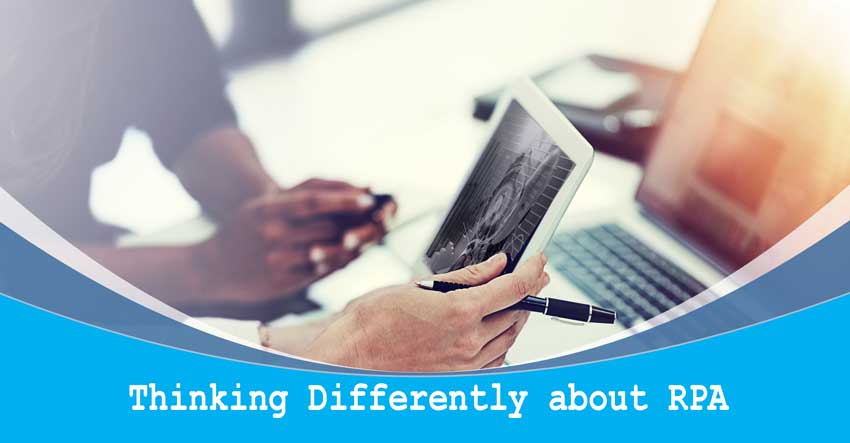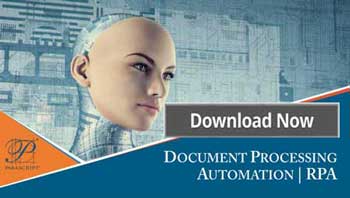
A version of this article by Greg Council was first published in The Data Center Journal, “Injecting (Artificial) Intelligence into Robotic Process Automation.” An excerpt is provided here.
Visit any website focused on business software and you find Robotic Process Automation (RPA). There’s good reason for it because RPA software has proven to reliably reduce costs by removing manual work from various business workflows and processes.
But is adoption of RPA everything enterprises need to automate their business processes? What else is in store in the realm of process automation that may not include RPA? To answer these questions, it helps to understand where RPA technologies came from and at what stage they are really at in terms of capabilities.
Process Automation: Let the Real RPA Please Stand Up
Process automation goes back to the early 20th century to source the original efforts, but let’s focus on the 1990s when commercial software-based automation for human-work processes first started to emerge. Before that in the ‘80s, most automation was the result of custom-developed, proprietary applications targeted at back-end processes such as what Sabre Technologies provided in calculating airline fares and fare matching/booking automation.
Expert Systems
“Expert systems”—a form of AI—emerged in the ‘90s that allowed a person to create encoded rulesets to automate specific tasks. Any person familiar with the auto-responder in the Outlook email application has encountered work automation using rules. You create a rule based upon certain conditions that tells the application when to automatically send a response email. This type of user-based automation emerged as features of existing applications.
Fast Forward to Modern Automation Systems
Fast forward to the early 2000’s when companies started to look to process automation for easier ways to “integrate” data from one application to another, especially with more services offered from websites. Software solutions emerged to “screen scrape” web-based and other GUI-based data to do things like automate filling-in forms or to aggregate account data from many different sites or applications. It wasn’t just data integration though. Other variants using a similar approach included automated software testing (e.g., for websites) such as simulation of users executing different commands.
What separated these newer automation solutions was that they were purpose-built, commercial solutions with user-friendly interfaces that did not require programming. You simply create a configuration by visually selecting the data from one application GUI and “mapping” it into another.
Enter Robotic Process Automation
Around this same time, software vendors focused on providing an underlying automation platform offering a generic way of applying these data integration methods with a workflow engine to automate an entire process. These tools gained popularity in the IT world where efforts involve a lot of rules-based, repetitive tasks. Take, for instance, provisioning a new employee with a computer desktop and software. Prior to these automation platforms, an IT staff member would need to manually install the necessary software on a desktop and configure the network, email software and other centralized systems with the new employee’s information and access levels. Most of these tasks are rote and very rules-oriented. With automation tools, such a process could be accomplished without any manual efforts.
Where RPA and AI Intersect
RPA is actually founded on one of the earliest examples of expert systems. This form of AI simply entails encoding the knowledge of a subject matter expert for a given task into a set of rules that can be executed by a computer-based system. As such, the more-specific and known the given task, the more-applicable RPA is for successfully automating it.
However, RPA software does not have “intelligence” built into it. Most “bots”—a term used to identify a specific automation routine—only work against given rulesets on structured processes. They do not adapt to new scenarios or learn from mistakes. This is the realm of AI referred to as “machine learning.”
Machine Learning for RPA
The most mature application of machine learning for RPA (but still relatively new) is the advance of “learn by example” into the bot configuration process. Here a system can monitor, completely in the background, a given SME’s actions for different situations. This monitoring manifests as a “learned” set of rules that can be implemented once complete and can be superior and more-flexible than traditional rules-based approaches.
Frankly, many RPA deployments lack the ability to dynamically adjust and adapt in an “online” fashion. For example, a process that deviates from its known path is treated as an exception that is handled manually; often there is no ability to learn about this exception. In essence, the application of machine learning to configuration of bots is a sophisticated way to bootstrap the automation of a process, but it still lacks the ongoing ability to add more value to complex, highly-varied tasks and to develop inferences which lead to new insights.
Extending RPA with Machine Learning-based Analysis
The most practical way to apply ongoing machine learning to RPA implementations is to treat RPA as a supplier of a large set of operational data. This data is fed into a “learning system” that then identifies patterns and other “data features,” which can be used to optimize existing encoded bots. This ongoing learning has significant value since you cannot ask operational staff to constantly report their every input and output, but you can require the same of a computer system. This ability presents an opportunity to apply machine-learning-based AI to many different processes.
Customer Onboarding RPA
Let’s take a customer onboarding process at a financial institution. This process involves extensive coordination between internal staff reviewing required documentation and the customer supplying it. Many perfunctory tasks are involved in this activity and ideal for RPA:
- Verification that all required documentation is submitted
- Review of data within documentation against defined policies (e.g., income and employment)
- Know-your-customer checks including verification of authenticity of ID (e.g.,address verification and ID verification)
These processes can be accomplished manually, but RPA is gradually working its way into this “front office” process. Let’s take a look how and see where application of AI can further add value:
| Activity | Description | RPA | AI Value |
| Document ID | Customer submits required documentation in-person or through submitting via smartphone app. | RPA, using document classification, can identify and sort documents, providing notification of missing documentation to the bank staff. | RPA can be trained via a learn-by-example approach, but cannot handle unknown documents that are submitted, which are treated as exceptions. These exceptions can be automatically identified and routed through the training system to update the set of known documents. |
| Customer Data Entry | Bank staff enters data from supplied documents into the banking system. | RPA, using automated data extraction via OCR, locates and populates data into the software. | While RPA can benefit from OCR, location of this data will vary with exceptions handled by bank staff via manual data entry. The data not found, can use values entered by the staff to update rulesets automatically so that data located on similar documents can be automated the next time. |
| ID verification | Bank staff view supplied identification. | RPA, using image analytics can identify presence of watermarks, microprint or other security features. Name, ID number, and address can be extracted and input into credit check system. | Just as with the previous two examples, AI benefits RPA when exceptions are encountered. These exceptions can be submitted to the learning system in order to learn new security features. |
| Blacklist check | Bank staff reviews the name and compare against company-published KYC blacklists. | RPA, using OCR, can extract names and match database of KYC entries. | Names incorrectly located or extracted can be identified as exceptions and added to a database to improve OCR and reduce the likelihood of future errors. |
As demonstrated through this illustration, the main benefit of applying AI to RPA systems is to reduce the potential for exceptions, which require costly and slower manual processing. This exception‑reducing workflow takes advantage of RPA’s inherent ability to collect key discreet data in the background on successes and failures which can create a closed-loop system through an automated update of existing rulesets using machine learning-based AI.
Fulfilling the Promise of RPA
RPA platforms hold a lot of promise to make significant change across many industries. They have matured to the degree where successful application of automation can be accomplished without a large investment of staff time and capital expenditures. The leaders of RPA have adopted a machine learning approach to initial configuration that benefits from easier-to-use, more-flexible, adaptive rule sets over its more brittle rules-based AI cousin using expert systems.
Still, we have a long way to go before RPA completely fulfills its “robotic” mission of completely removing the human element from our business processes, both in the front and back offices. Using machine learning platforms to also incorporate new information gathered from background collection of workflow exceptions is the most-practical next step to achieving full automation.
###
Find out more about how placing Parascript self-learning document automation at the core of cognitive Robotic Process Automation (RPA) enables your complex document-based process to access key data.
If you found this news interesting, you might find this RPA eBook useful:




